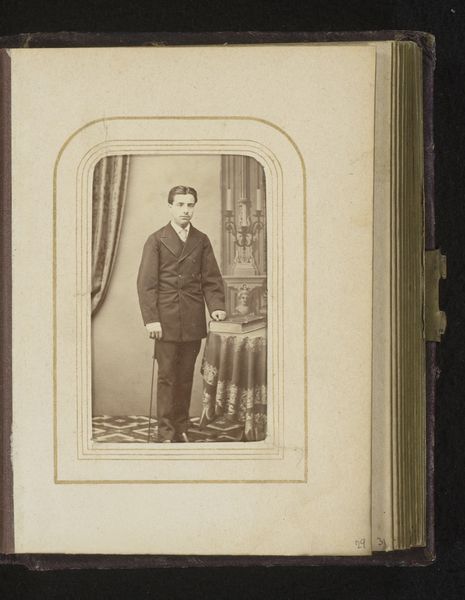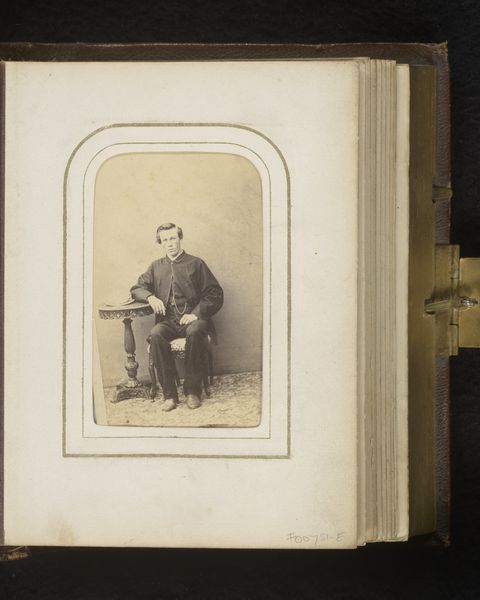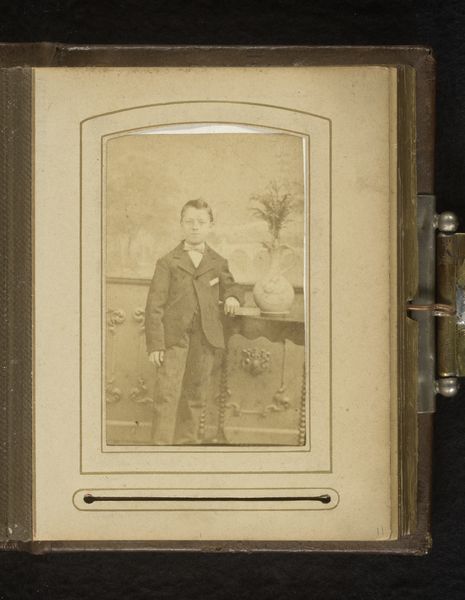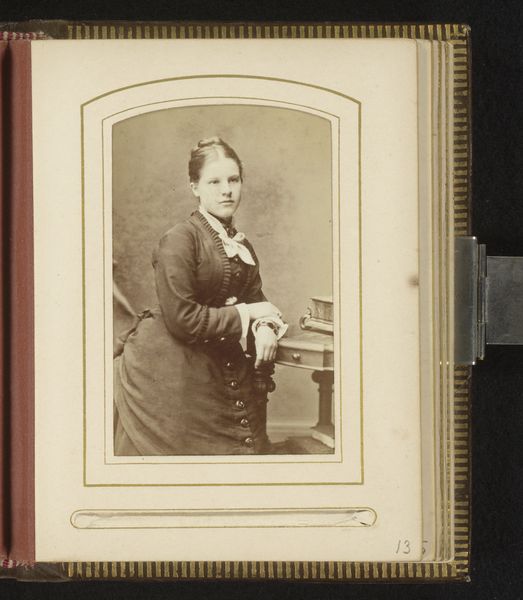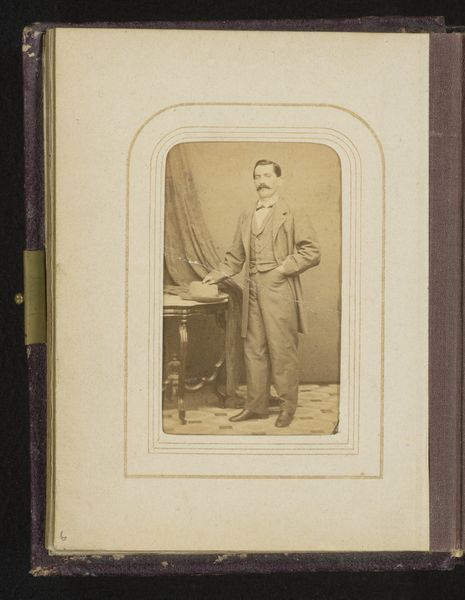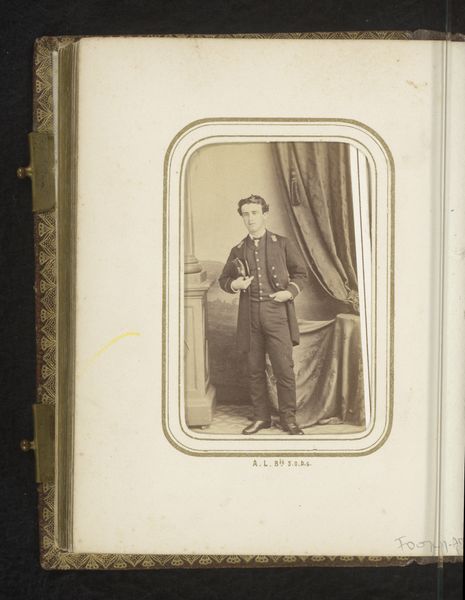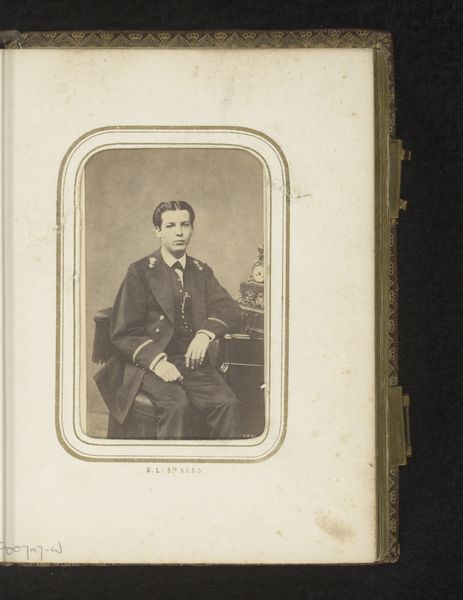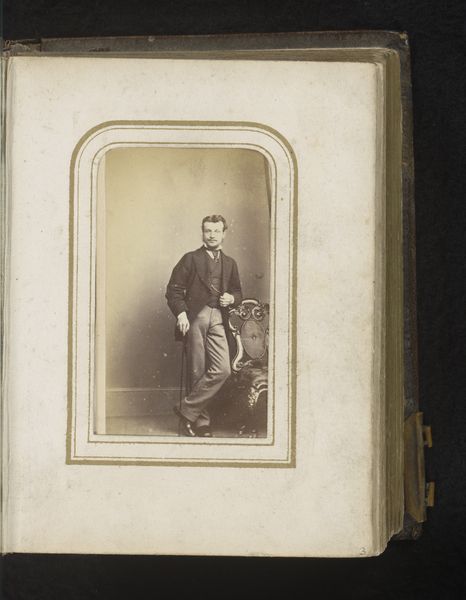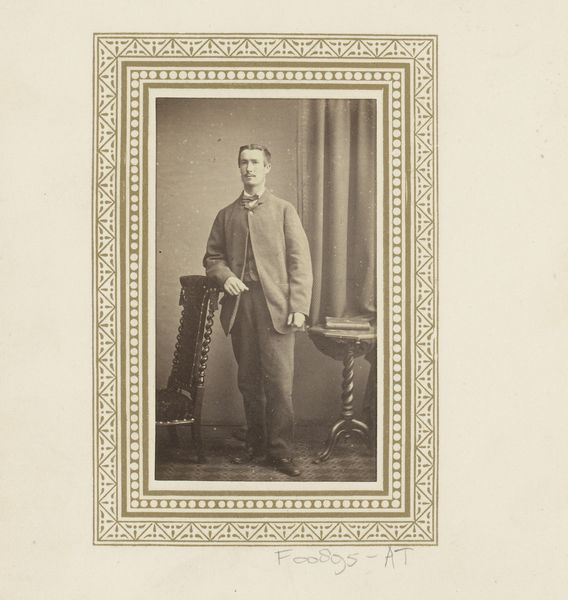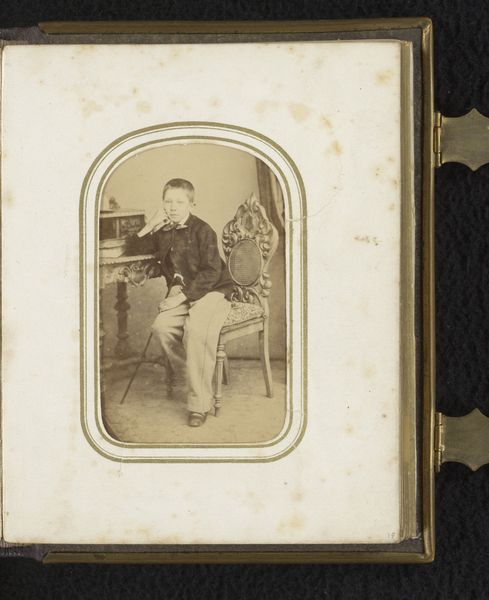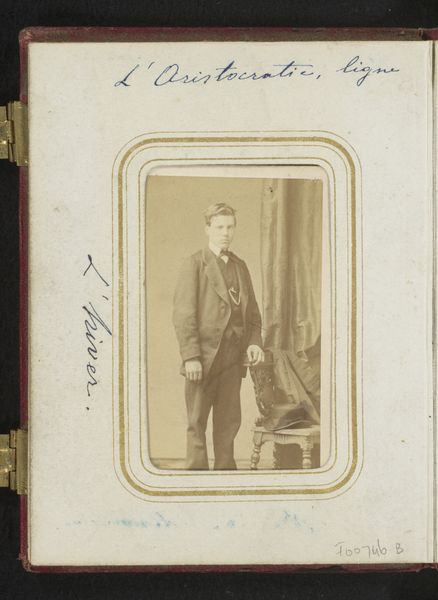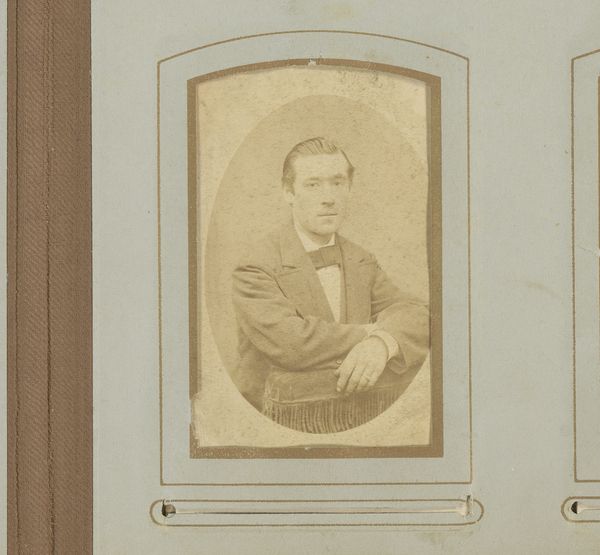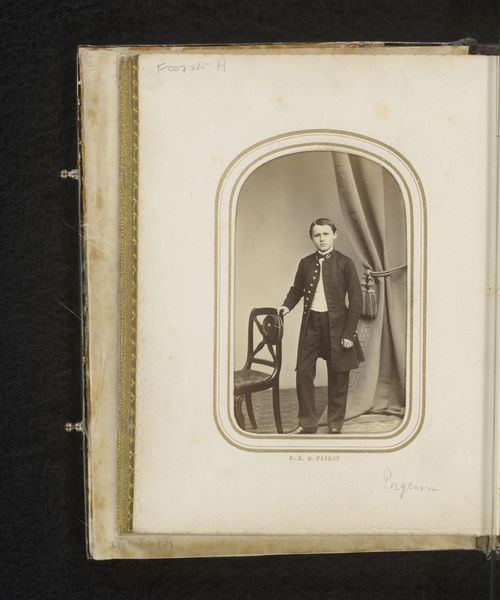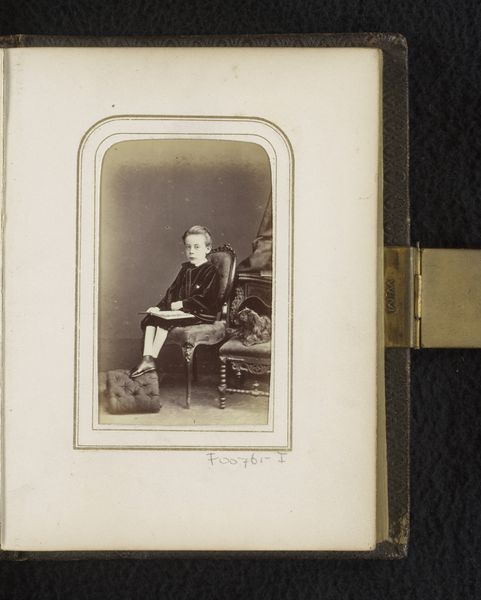
paper, photography, albumen-print
#
portrait
#
paper
#
photography
#
coloured pencil
#
genre-painting
#
watercolor
#
albumen-print
#
realism
Dimensions: height 102 mm, width 63 mm
Copyright: Rijks Museum: Open Domain
Editor: This is a piece called "Portret van een zittende jonge man," or "Portrait of a Seated Young Man." It’s from between 1870 and 1900, created by Willis & Co., using albumen print. It’s fascinating how this photographic portrait captures a sense of restrained dignity, but I wonder, what societal role did such portraits play back then? Curator: That’s a very insightful observation. Studio portraits like these gained prominence in the late 19th century due to advances in photography and became widely accessible to the middle class. Prior to that, portraiture was mostly reserved for the elite, think paintings commissioned by royalty or wealthy merchants. Photography democratized the medium, offering a means for ordinary individuals to document their existence, to craft their own image for posterity, and also climb the social ladder. Editor: So, these portraits weren’t just about capturing likeness, they were about creating an image? I mean, the sitter is adorned with some pretty elaborate accessories. Curator: Precisely! The details are clues. Observe the setting: a potted fern, and draped fabric are signs of affluence, of social climbing. How might you relate the sitter's attire to broader social aspirations in the latter half of the 19th century? He seems to be projecting an aura of respectability. Editor: It sounds like these images became powerful tools for self-representation. Almost like a form of early social media! Curator: Indeed. The mass production and dissemination of these images certainly laid groundwork for our modern, visually driven culture. The question is, do we have the power to self-represent, or do social and institutional powers still shape that representation? Editor: That's a perspective shift! Thinking about this photo within that framework is a real eye-opener. It's amazing how one portrait can reflect so much about society at the time. Curator: Absolutely. It underscores the vital public role that art plays, and makes me reflect on whose stories are being told today through the art that's made, bought, and sold.
Comments
No comments
Be the first to comment and join the conversation on the ultimate creative platform.
